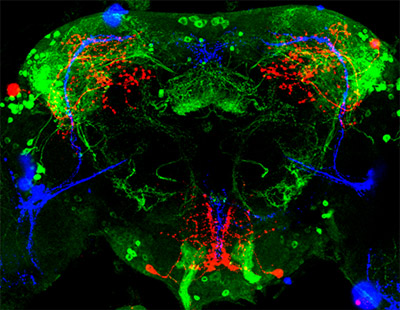
Feeling sleepy and dazed after the switch to daylight savings time this weekend? Your internal clocks are probably a little off and need some time to adjust.
Researchers have been studying biological clocks for decades to figure out how they control circadian rhythms, the natural 24-hour pattern of physical, mental and behavioral changes that affect sleep, appetite and metabolism. Knowing more about what makes our clocks tick could help researchers develop better therapies for sleep problems, metabolic conditions and other disorders associated with mistimed internal clocks.
Studies using fruit flies have been key to finding the molecular gears of biological clocks and the cells that control these rhythms. That’s partly because the fruit fly has fewer genes and fewer nerve cells, or neurons, driving these rhythms than more complex organisms like ourselves. However, scientists have puzzled over how a fairly small number of neurons can coordinate the daily rhythms of an entire animal.
A research team led by Justin Blau of New York University has now provided one explanation. This image of the fly brain illustrates what the scientists learned and reported in an article published last month in Nature Neuroscience.
The team found that clock neurons send information to two cells named leucokinin (LK) neurons, which then signal to cells named leucokinin receptor (LK-R) neurons. These LK-R neurons, in turn, signal to sleep centers deep in the brain.
Clock neurons are the only cells in this neural circuit with their own clocks—but their rhythmic signals are preserved as information flows from cell to cell, making LK and LK-R neurons also signal rhythmically. So, this circuit propagates time-of-day information from clock neurons all the way to locomotor and sleep centers. Any disruption of the neurons in this circuit and the connections between them would interfere with the daily behavioral rhythms of the animal.
The researchers note that other cells also signal to LK and LK-R neurons to regulate sleep and plan to identify these cells to understand how environmental factors influence sleep timing and duration.
This work was funded in part by NIH under grants R01GM084947, R01GM063911 and R01EY017916.


A GOOD BIOLOGICAL CLOCK TO KNOW THANKS!